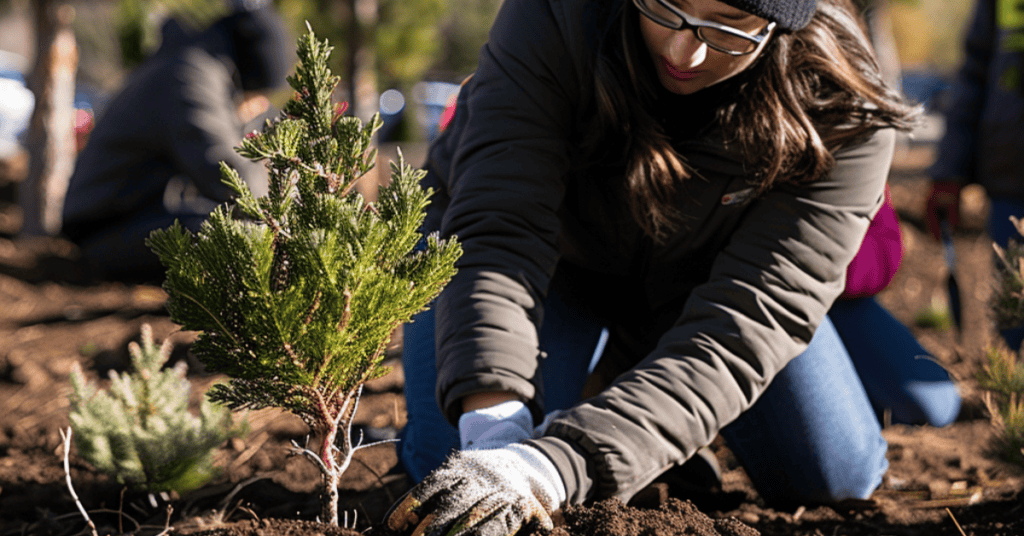The Callery Pear: Once Adored in Denver is Now Vilified
Note: This article was originally inspired by this article from Fox 31 Denver – “If it smells like fish in Denver, it might be from this blossoming tree“
Originally from China and Vietnam, the Callery Pear (also referred to as the Bradford Pear) is considered to be an ornamental tree due to its attractive white flowers and pleasing form. They bear white flowers in early spring and display a fast growth rate.
These beautiful but pungent flowers are extremely noticeable right now (April) across Denver metro. The smell has been compared to rotting fish. Fortunately the bees seem to like the smell as they are a primary pollinator of the Callery Pear Tree – and yes, bees do have a sense of smell that is way more sensitive than ours.
In addition to their beautiful/stinky flowers, the trees grow very fast. It usually develops a pyramidal shape, which can become more oval or spreading with time. This can be an advantage when looking to fill out a barren residential landscape in relatively short order.
The Dark Side of Callery Pear Trees
In addition to the offputting smell in the springtime, the trees are considered invasive in many parts of the country. They spread aggressively and can push out native trees and plants as they compete for the same resources.
Fortunately in Denver, their invasive tendencies don’t present too much of a problem. However, their weak limbs should give homeowners pause before planting a Callery tree in their backyard.
Our late spring snows can cause damage to those weak limbs – especially if the tree has leaves. Additionally, the tree’s robust growth habit often leads to a shallow root system that can make it susceptible to the powerful winds we have in Colorado. The weak limbs and shallow roots have the potential to limit the lifespan of the tree across Denver’s Front Range.

The beautiful flowers of the Callery Pear tree emit a quite unpleasant smell
Uses in Urban Environments
Callery Pear Trees provide visual appeal and show resilience in urban areas.
Environmental Tolerance
These trees have a high tolerance for urban stress factors such as pollution and restricted soil conditions. They can withstand drought, heavy snow, and thrive in the constrained environments typical of city streets.

The Callery Pear Has Weak Limbs and Shallow Roots Making it Quite Susceptible to Storm Damage and Heavy Snow
Disease and Pests
The Callery Pear tree falls prey to fire blight, a bacterial disease that devastates both ornamental and edible pear varieties. Moreover, the tree attracts various insects and diseases, which not only weaken the tree but can also spread to surrounding flora.
Regulatory Status
The invasive traits of the Callery Pear have led to intervention by the United States Department of Agriculture and state authorities. States like Ohio have banned the sale, planting, and growth of Callery pears due to their aggressive and dominating behavior in ecosystems. Other states are enacting similar bans, recognizing the environmental threat posed by these trees.
Care and Maintenance
The upkeep of Callery Pear Trees demands attention to both pruning and environmental protection. These steps ensure tree health and vitality.
Pruning and Trimming
- Schedule: Prune in late winter while dormant.
- Approach: Remove co-dominant leaders to prevent weak branches.
- Growth Control: Trim to shape the tree and encourage strong structure.
- Health: Cut out diseased or damaged limbs.
Pruning serves as a critical maintenance step for promoting robust growth and extending the lifespan of Callery Pear trees. It also reduces the risk of branch failure under heavy snow.
Avoiding Damage
- Wrap Trunks: Protect from rodents and harsh weather.
- Planting Site: Choose locations away from strong winds (no easy task in Colorado)
- Support: Stake young trees to withstand environmental stress.
- Watering: Establish regular hydration, crucial in early growth stages.
